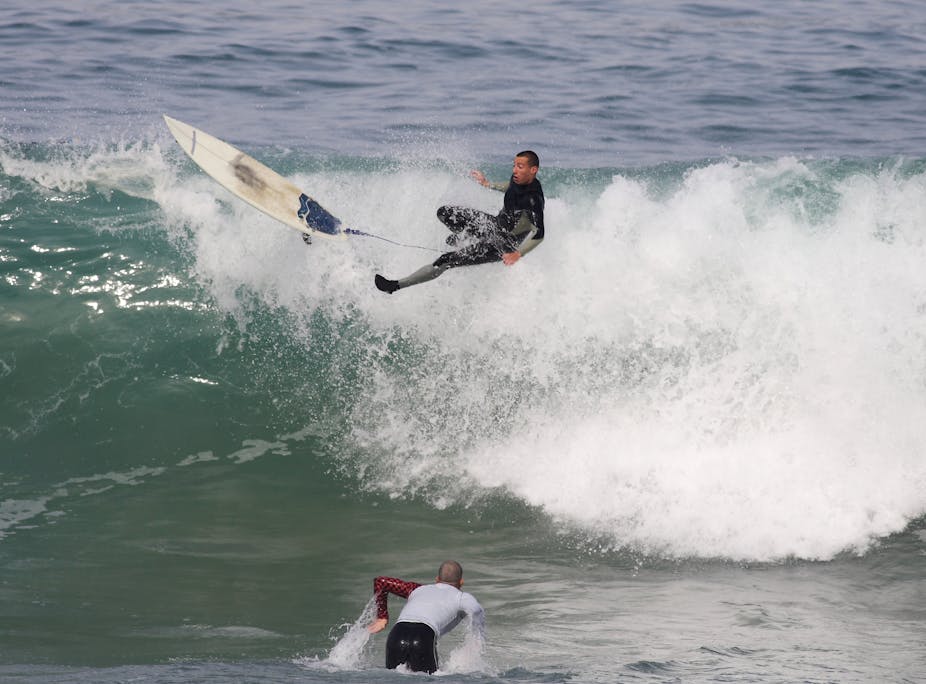Australia’s “big three” surf brands have found themselves in choppy financial waters.
Last week, Billabong, one of Australia’s most iconic surf brands confirmed a $386 million refinancing agreement with US consortium Centerbridge-Oaktree Capital Management acquiring a 40% share, guaranteeing the struggling brand’s short-term future after it posted an $859 million loss last financial year.
Like Billabong, public surf company Quiksilver has reported declining revenues, asset write-downs and growing losses, recently announcing third-quarterly earnings had declined 84%. Privately-owned Rip Curl has also been in profit free-fall. In mid-2012 Rip Curl founders Brian Singer and Doug Warbrick engaged Bank of America Merrill Lynch to help source a prospective buyer for the brand. The planned sale was abandoned in March with a lack of interest at the asking price of $400 million.
The current woes are a long way from the heady days of the 1990s and 2000s, which saw each of the big three surf brands aggressively pursue international expansion and high-profile sports sponsorship deals.
So, why have the Big Three surf brands found themselves struggling? And what is the way to calmer waters?
Heady ride, then dumped
Each of the big three had grown embryonically in the 1970s alongside the rising popularity of the beach and surfing in Australia and California. The people running each business were avid surfers themselves and brands established strong credibility within surfing subculture. Billabong, Quiksilver and Rip Curl clothing came to symbolise surfing’s laid-back, counter-cultural values, equally consumable by non-surfers that identified with the lifestyle.
The 1990s and 2000s saw Quiksilver and Billabong aggressively acquire emerging youth labels (DC Shoes, Rossignol Skis, Element, RVCA, Dakine, Mrs Palmers surf gear, Nixon watches) to consolidate market share. The brands’ integrated business operations by funding new retail stores, buying-up existing chains and standardising design. Between 2005 and 2011 Billabong purchased some 600 retail outlets; 150 of which have closed in the last 12 months. Large department chains have also featured prominently and agreements with surf brands were intended to facilitate greater access to non-surfing consumers.
The companies’ fortunes further rode on a re-organised World Championship Tour which included highly publicised surfing events on every inhabited continent. Snowboarding and skateboarding rose to greater prominence and complemented the values already imbued in the surf brands. New and highly profitable markets emerged in Europe and Asia.
Regaining their “cool”
Yet, as the big three surf brands grew so did a disconnect between global commercial ambitions on the one hand, and maintaining local subcultural credibility on the other hand. Ironically commercial success has also been the source of their troubles.
The big three have lost their “cool” with young people – their core demographic. Exposed to increasingly fast fashion cycles the Big Three have been unable to move expensive, out-of-fashion clothing.
What then does the future hold for the surf business?
The big three are now attempting to reconnect with this ‘core’ by creatively refocusing their brands. You can now order ‘custom’ designed clothing from Quiksilver. Rip Curl has begun playing-up a “craft” association and the ‘authentic’ nature of their surf products – tracing back to the company’s custom surfboard manufacturing roots.

More sustained efforts to reconnect with core consumers might involve re-focusing on design and clothing styles distinctive to local markets. Such an approach worked well for Billabong in South Africa during the early 2000s when surf shop owner Cheron Kraak received a licence from Billabong founder Gordon Merchant to design and manufacture clothing locally.
In 2005 Kraak helped Billabong win a fashion award as the most popular female youth brand in South Africa. Billabong bought back the licence in 2007, started supplying stores with generic designs and sales in the country have since tanked. Opportunities also exist to grow online retail, which currently makes up around 10% of the big three’s overall sales.
But what appears increasingly probable is that at some point in the future the big three will themselves be acquired by larger retail corporations. The case of Volcom is instructive.
Volcom began life from Southern California’s surf/skate subcultures in 1991 and grew rapidly in the early 2000s using the slogan “Youth Against Establishment”. In 2005 the brand floated on the New York Stock Exchange. However, by 2011 Volcom had seemingly reached growth limits and was acquired for $607 million by French luxury fashion conglomerate Kering (formerly PPR). After delisting Volcom, Kering re-energised the brand by increasing funding to select action sports events and athletes. Volcom is now outperforming the big three, with sales growth for the first half of 2013 increasing 19%.
Space to grow
Despite the wobbles in the Australian market, the global demand for surf-styled apparel is expected to remain strong and there are some useful lessons among some of the newer entrants.
Hollister, a spin-off of US retailer Abercrombie & Fitch has successfully moved into surf clothing and retail in the last decade. And smaller, culturally engaged brands are also emerging. One example is the Byron Bay label, Afends. Afends has experienced dramatic growth in the last three years, trading in loud, edgy apparel sold through independent stores supplemented by a strong online presence. The brand has a growing following amongst young surfers and skaters in Australia and California and shuns advertising in the usual surf media outlets. The problems being experienced by the Big Three has actually created space for the growth of creative, independent surf brands, thanks to the reduced threat of acquisition.
Problems facing the large surf brands such as Billabong are a reminder that doing business in surfing is volatile and inherently risky. But the big three will survive in one form or another. The challenge for them and other emerging brands is to maintain subcultural credibility.

